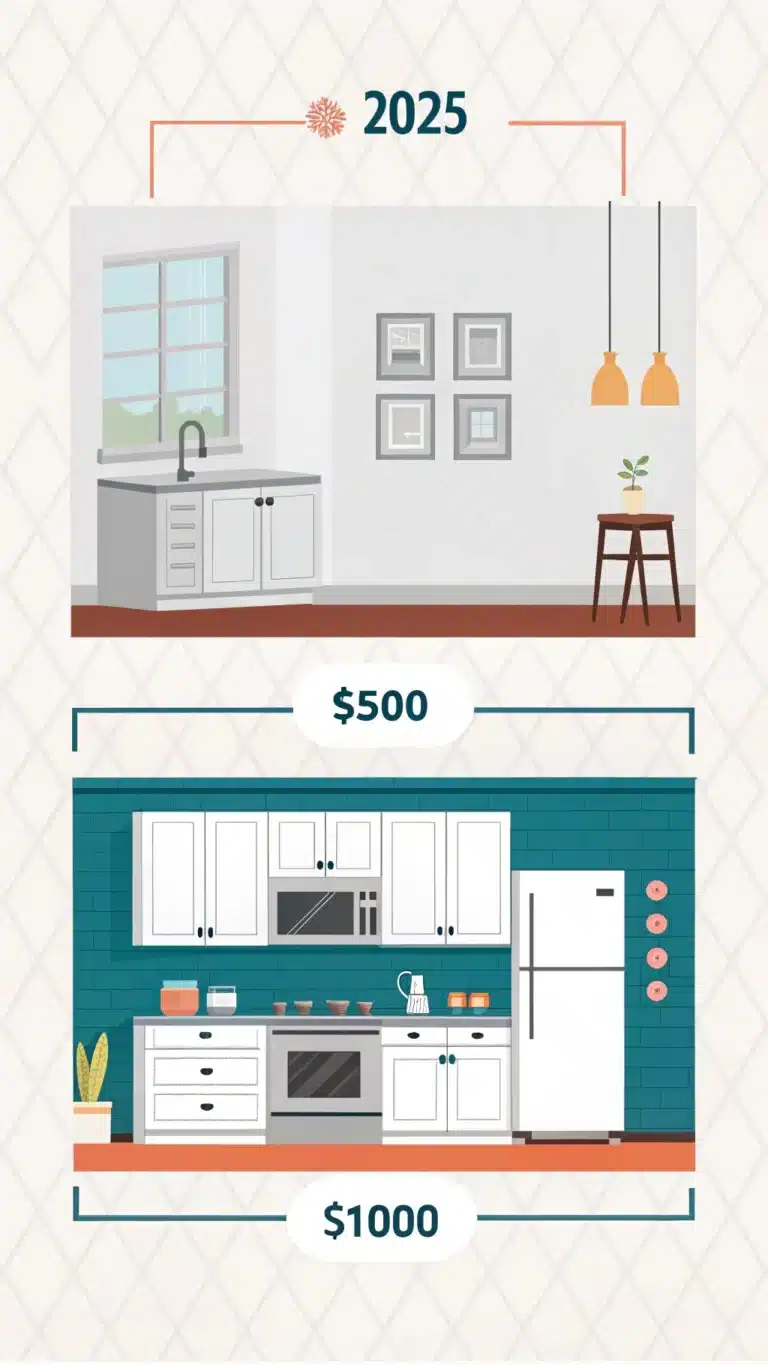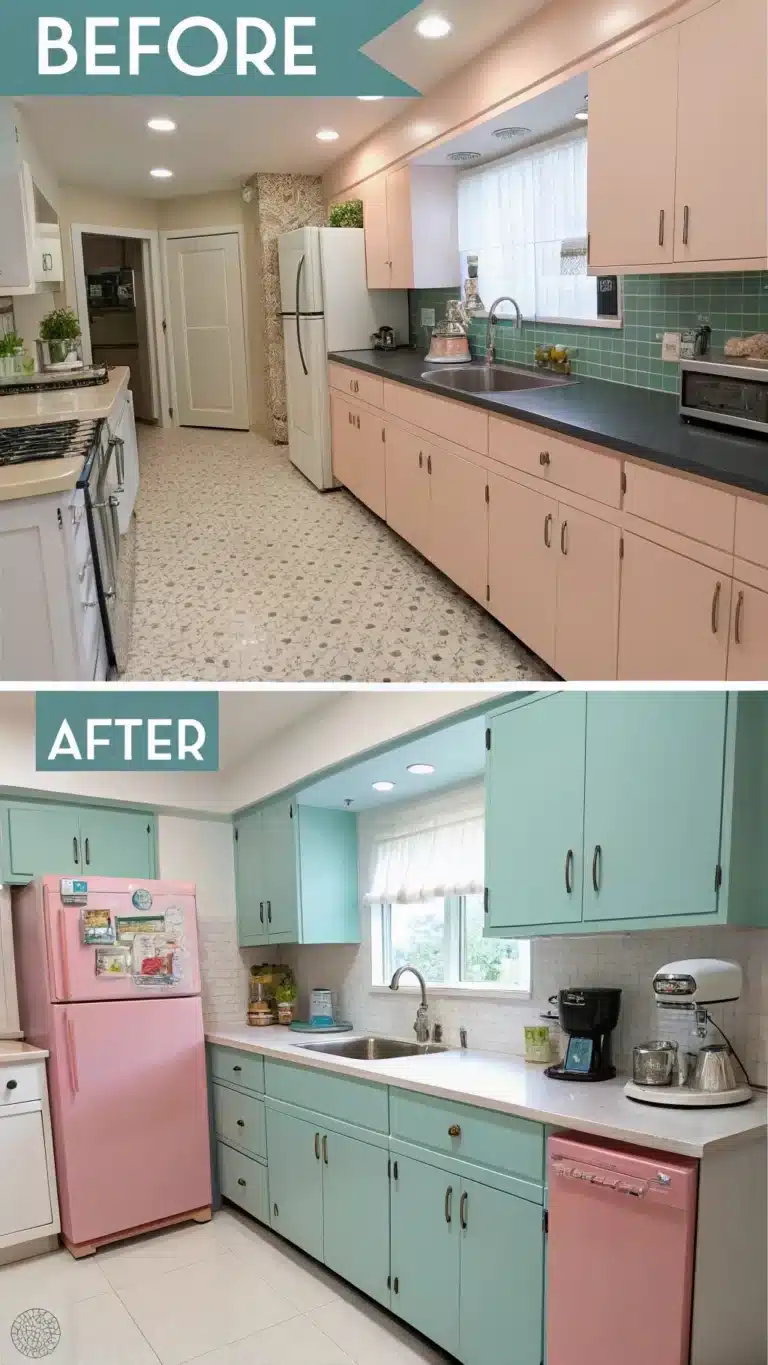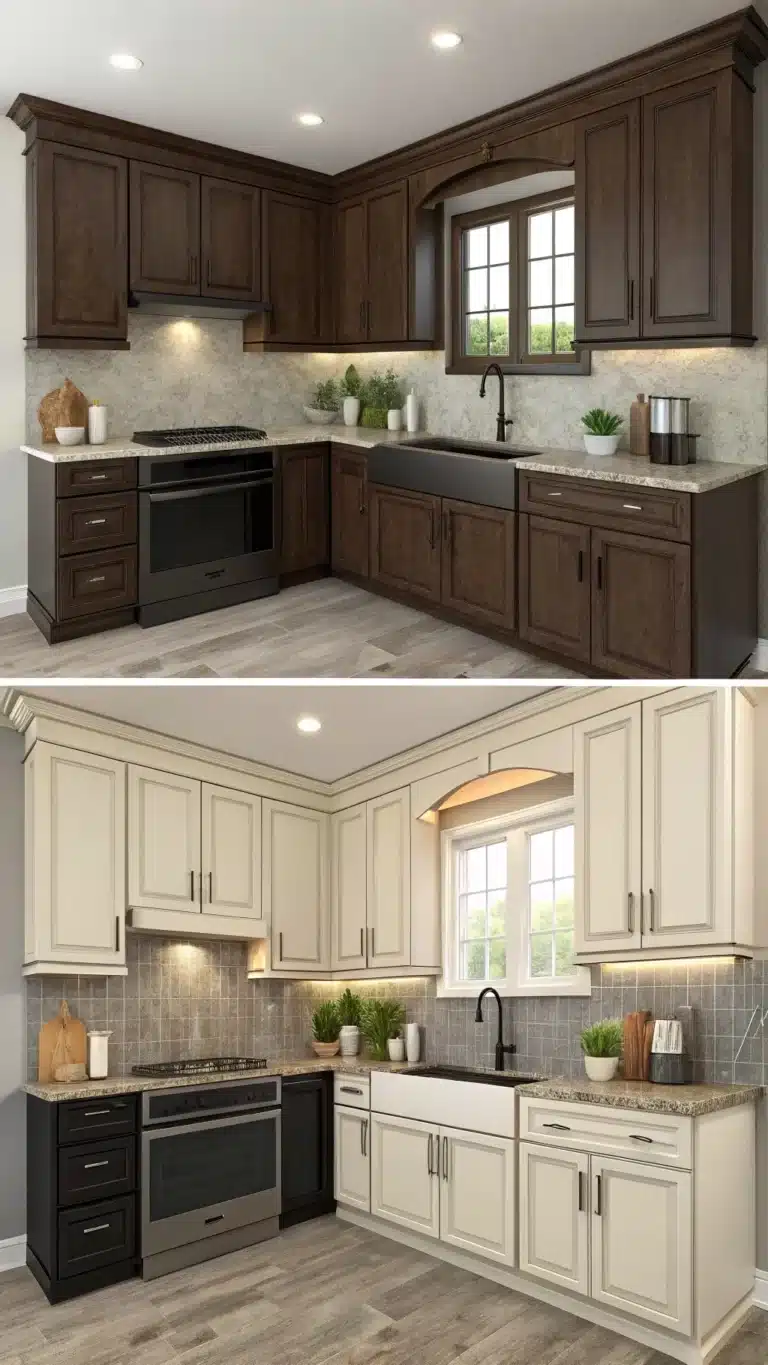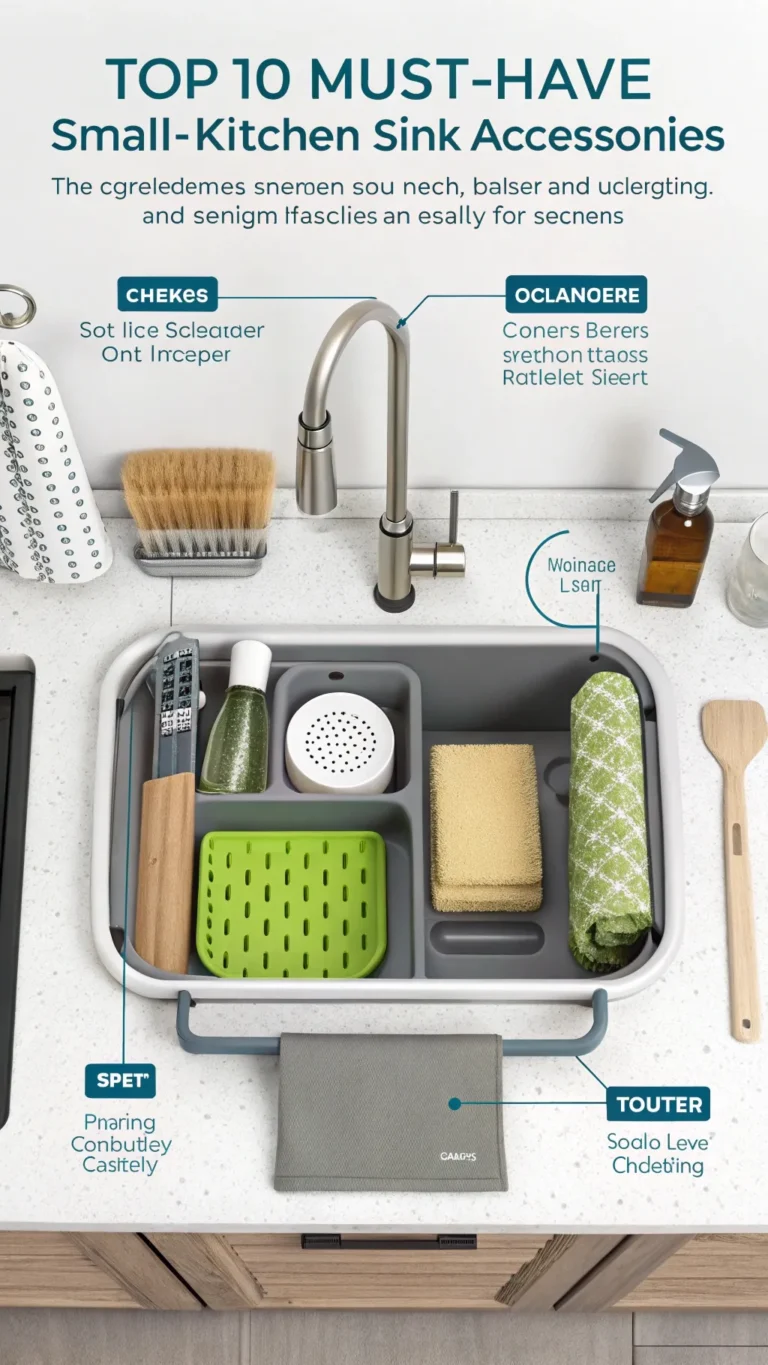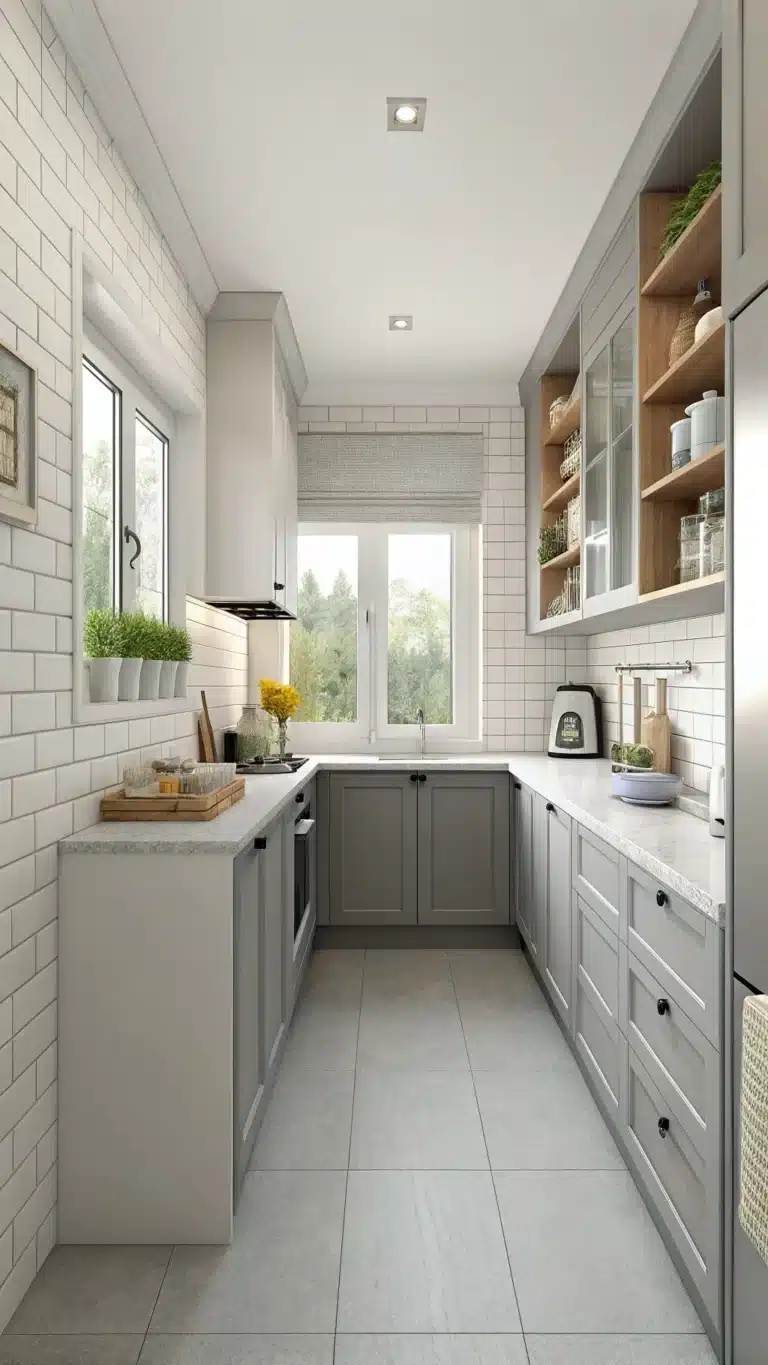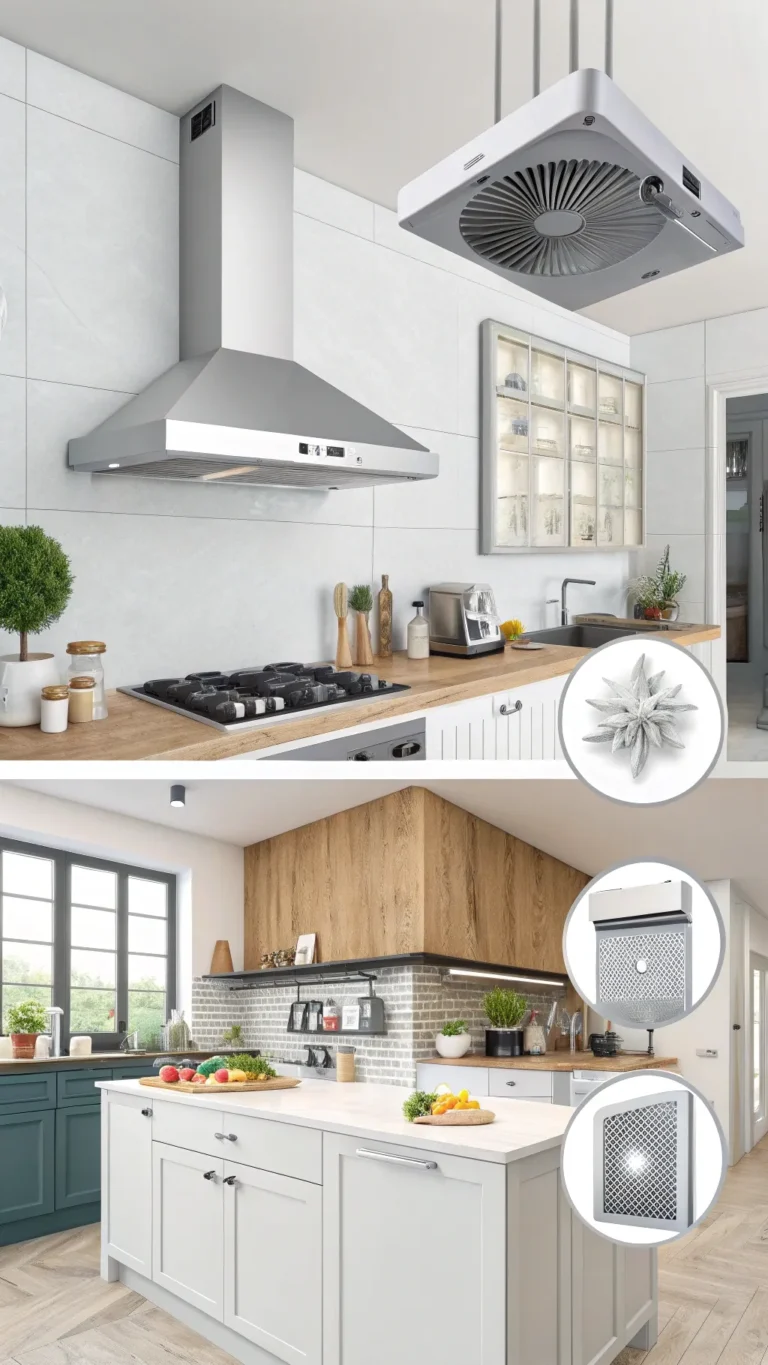Introduction
Many feel stuck in small kitchens. Tight spaces make cooking and cleaning hard. Counters fill up quickly. Drawers overflow with utensils. Finding things becomes a daily challenge. This can cause stress after a long day.
Small kitchen organization solves these problems. It turns a cramped area into a well-planned workspace. You will learn how to use every inch wisely. This guide shares practical ideas and easy strategies. From decluttering to smart storage hacks, it covers all. Whether you rent or own, you can improve your kitchen.
Get ready for tips on clearing clutter, organizing cabinets, smart vertical storage, pantry management, and appliance control. You will build a kitchen that feels bigger and more comfortable. Let’s make your small kitchen work better for you.
The Small Kitchen Organization Mindset: Declutter, Plan, and Strategize
Why Organization Matters in Small Kitchens
A small kitchen needs a clear system. Mess wastes time and energy. Studies show organized kitchens save up to 30% of cooking time. Reducing clutter makes cooking more fun. Smart organization helps you maximize small kitchen space.
The First Step: Ruthless Decluttering
You cannot organize what you don’t need. Sort your kitchen items with three piles:
- Keep: Used daily and bring joy
- Donate/Sell: Still good but seldom used
- Discard: Broken or expired items
Marie Kondo says, “Keep only what sparks joy.” Check expiry dates on food and throw away old items. For sentimental things, limit yourself to one box.
Step-by-step decluttering:
- Empty drawers and cabinets
- Sort items into piles
- Clean the empty spaces
- Make decisions quickly
Decluttering gives you a fresh start. It frees up space for important things.
Understanding Kitchen Zones
Divide your kitchen into zones for better flow:
- Prep Zone: Counter space near sink and fridge
- Cooking Zone: Near stove and oven
- Storage: Cabinets and pantry
- Cleaning: Sink and dishwasher area
Knowing your zones helps place things where you use them most.
Planning Your Layout
Look carefully at your kitchen. What works? What causes problems?
- Note tight spots or blocked cabinets
- Measure shelf and counter sizes
- Identify areas with wasted space
Plan realistic goals for your organization. Changing everything at once often fails. Pick one zone or cabinet to improve first.
Clever Cabinet & Drawer Hacks: Unlocking Hidden Potential
Mastering Cabinet Interiors
Cabinets hide much potential. Use vertical dividers for cutting boards and baking sheets. These keep boards standing, easy to grab.
Tiered shelves save shelf space. Stack plates or containers without crushing smaller items. Pull-out shelves make deep cabinets accessible. Look for slide-out racks or drawers.
Under-shelf baskets add another layer below existing shelves. Hang them for mugs or spices.
Divide cabinet spaces by purpose, like a baking zone or breakfast zone.
Drawer Organization Secrets
Drawers tend to become junk spots. Use dividers to separate utensils, gadgets, and small tools. Drawer organizers come in stackable forms, doubling capacity.
For kitchen towels or linens, fold them tightly. Fold the edges inward to keep the shape. Stack neatly or roll them for easier access.
Utilize Cabinet Doors
Use inside cabinet doors for extra storage. Attach hooks for measuring cups or potholders. Small racks can hold foil, cling wrap, or bag clips.
Corner Cabinet Solutions
Corners are hard to use. Lazy Susans spin to reach all corners. Blind-corner pull-outs slide shelves out for access.
Mastering Your Small Pantry: Smart Food Storage Solutions
Assess Your Food Storage Space
Some homes have deep pantries, others only small cabinets. Work with what you have. Convert a tall cabinet or unused shelf into a pantry.
Containerizing for Clarity and Freshness
Use clear, airtight containers for dry goods like cereal, rice, or pasta. Seeing contents saves time and prevents buying duplicates.
Choose containers with sustainable materials like glass or BPA-free plastic. Label containers with names and expiry dates.
Maximizing Shelf Space
Tiered spice racks keep small jars visible. Can organizers slide cans in front of each other, saving space. Use vertical storage for bottles and jars.
Baskets group snacks or packets so they don’t scatter.
Using Pantry Doors
Use over-the-door racks for spices, wraps, or snacks. These free up shelf room inside.
Handling Produce and Refrigerated Items
Keep produce in baskets or clear bins. Use fridge door shelves for frequently used condiments. Label leftovers with dates.
Wall-Mounted Wonders & Vertical Storage: Using Every Inch
The Power of the Wall
Open shelving adds storage without bulk. Be cautious; clutter shows easily on open shelves.
Pot racks hang cookware overhead or on walls, saving cabinet space. Magnetic knife strips keep knives handy and off counters.
Wall-mounted containers hold utensils or spices neatly.
Using Side Gaps and Narrow Spaces
Slim rolling carts fit between fridge and wall. Vertical pull-out spice racks stand tall in narrow spots.
Over-the-Sink or Window Shelving
Place a small shelf above sink. It holds soap, plants, or small items.
Hooks, Pegboards, and Rail Systems
Hooks and pegboards customize storage. Hang mugs, pots, or cooking tools. Rails with hooks offer flexible arrangements.
Countertop & Sink Area Control: Keeping Busy Zones Clutter-Free
Keep Counters Clear
Clear counters make cooking easier. Store appliances not used daily inside cabinets. Create a small landing zone for daily essentials like coffee or knives.
Smart Sink Area Solutions
Under-sink organizers hold cleaning supplies neatly. Slim caddies attach inside the sink for brushes and sponges. Over-the-sink drying racks save counter space.
Countertop Organizers
Use tiered fruit baskets or small utensil crocks without crowding counters.
Use Backsplash Space
Rails behind counters hold utensils or tablets for recipes.
Appliance & Gadget Storage: Taming the Tools of the Trade
Storing Small Appliances
Store blenders, toasters, and mixers in dedicated cabinet shelves. Use vertical spaces with stackable solutions. Appliance garages hide items but keep them easy to grab.
Gadget and Utensil Organization
Use drawers with dividers or crocks on counters for frequently used gadgets.
Storing Less Frequent Items
Put seasonal or rarely used items on high shelves or above the fridge.
Technology Trends for 2025
Some kitchens use smart storage systems with sensors or voice control. Charging stations keep devices powered but out of sight.
Frequently Asked Questions About Small Kitchen Organization
What are the first steps to organizing a tiny kitchen?
Start by decluttering. Sort items to keep only what you need daily. Plan zones and set goals.
What are must-have storage products for small kitchens?
Drawer dividers, pull-out shelves, vertical racks, clear airtight containers, and under-shelf baskets.
How can I organize my kitchen cabinets effectively?
Use vertical dividers, tiered shelves, door hooks, and corner lazy Susans.
Is it possible to organize a small kitchen on a tight budget?
Yes. Repurpose containers, DIY shelves, and use affordable dividers. Second-hand stores offer good bargains.
How can I keep my small kitchen organized long-term?
Regularly declutter and clean. Return items to their place after use. Avoid buying duplicates.
Transform Your Kitchen with Smart Organization
Living in a small kitchen does not mean constant clutter. Thoughtful small kitchen organization changes daily life. Clear counters, tidy drawers, and smart pantry storage combine for efficiency. You gain more room without renovation. Achieve a kitchen that feels open, calm, and ready for cooking.
Try one hack today. Organize your cabinets or declutter one drawer. Small changes add up fast. Share your progress or ask questions. Your tiny kitchen can become a happy place.
This guide proves small kitchen space can work hard for you. Good organization changes everything.

